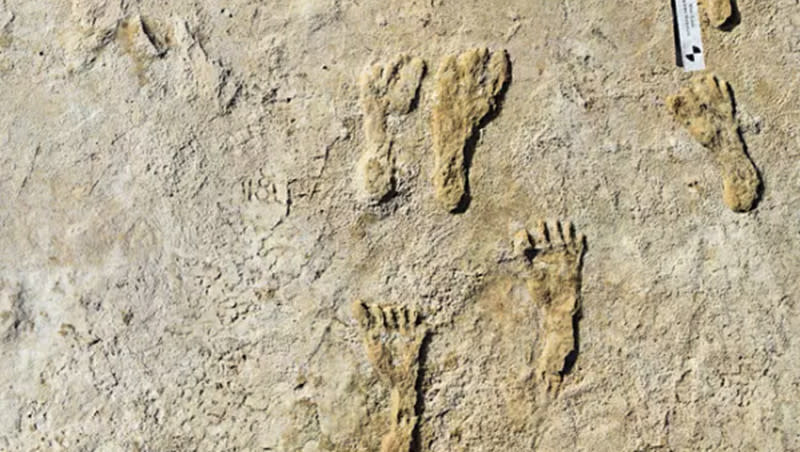Did humans come to the Americas sooner than we thought?

Fossilized footprints in New Mexico may suggest that humans traveled to the Americas earlier than previously known.
New research published in the journal Science analyzed the footprints found in the White Sands National Park in New Mexico. Using radiocarbon dating of seeds from the footprints, scientists proposed that humans could have arrived in the Americas from “as early as 21,000 to 23,000 years ago.”
One of the previous theories was that humans arrived “16,000 to 14,000 years ago, after the Last Glacial Maximum, when people would have crossed the Beringian strait from Siberia over a dry land bridge,” researchers wrote for Science.
These footprints were first discovered in 2021 and sparked controversy among other archaeologists. “The skeptics noted that aquatic plants such as Ruppia cirrhosa — the one used in the 201 study — can acquire carbon from dissolved atoms in the water rather than the air, which can result in a misleadingly early date,” CNN reported.
“This is a subject that’s always been controversial because it’s so significant — it’s about how we understand the last chapter of the peopling of the world,” Cornell University archaeological scientist Thomas Urban told The Associated Press. Urban was involved in the initial 2021 study, but not the 2023 study.
To support this earlier date of humans’ arrival, the researchers used radiocarbon dating of conifer pollen, which doesn’t present the same issues when it comes to dating that aquatic plants have. Additionally, the team used optically stimulated luminescence, which can determine “the last time quartz grains in the fossil sediment were exposed to sunlight,” according to CNN. The quartz reportedly had a minimum age of 21,500 years.
“The immediate reaction in some circles of the archaeological community was that the accuracy of our dating was insufficient to make the extraordinary claim that humans were present in North America during the Last Glacial Maximum,” co-lead author of the study Jeff Pigati told CNN. “But our targeted methodology in this current research really paid off.”
“People can argue against any single dating technique, but it’s the totality of the study, the congruence of the ages from all three different dating techniques that really make our results exceptionally robust,” Pigati told NPR.
The results of this study are still contested.
Some scientists do not think the dating of the pollen and quartz is sufficient evidence of rethinking the date when humans arrived to the Americas. “All they really are telling us is that the clay that underlies all the footprints is potentially as young as 16,000 and potentially older than 21,000. That’s pretty uncertain,” Oregon State University anthropologist Loren Davis said to NPR.
“I applaud their efforts to try to resolve this issue,” Texas A&M University archaeologist Michael Waters told Smithsonian Magazine. “But my suspicion is that the ages that have been generated so far are older than what they truly are.”
While more research may confirm or complicate the findings of this recent study from Science, the footprints themselves tell a story about early humans.
“One set of prints appears to have been made by a woman and a toddler who intermittently walked on its own and then was picked up and carried,” Brian Handwerk wrote for Smithsonian Magazine. “At some places the child’s little prints disappear even as the woman’s broaden in the mud under the burden of the youngster’s extra weight.”
The other footprints indicate “a group of ancient hunters apparently stalked a giant sloth.” The results of the hunt are unknown, Handwerk reported.

